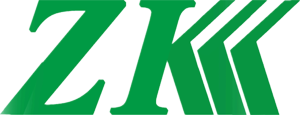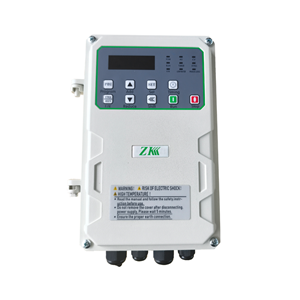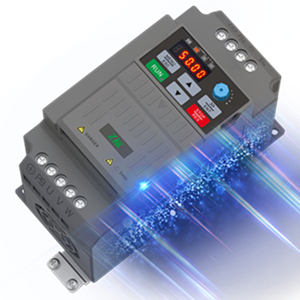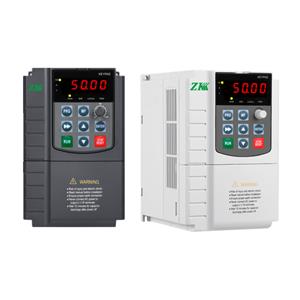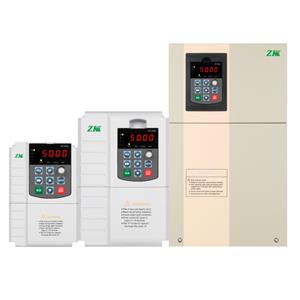Application of Frequency Inverters in Conveyor Belts and Material Handling
Application of Frequency Inverters in Conveyor Belts and Material Handling
Core Application Value
The primary purpose of using a VFD in a conveyor system is to replace traditional direct-on-line starting or mechanical speed control methods (e.g., gearboxes, adjustable-speed motors), thereby achieving intelligent and flexible control. Its core value is reflected in the following aspects:
一、 Key Advantages and Functions
Smooth Soft Start/Soft Stop, Eliminating Tension Shock
Traditional Problem: When a motor starts directly, torque is applied to the belt instantaneously, causing severe mechanical shock. This subjects components like belt joints, rollers, and bearings to immense stress, shortening equipment lifespan and potentially causing belt slippage, misalignment, or even breakage. Sudden stops can cause materials to collapse or spill due to inertia.
VFD Solution: The inverter allows for the setting of linear or S-curve acceleration and deceleration times, enabling motor torque to increase and decrease smoothly. This achieves soft starting and soft stopping of the conveyor, completely eliminating mechanical shock and protecting the mechanical structure. This is particularly beneficial for long-distance and heavy-load conveyors.
Stepless Speed Control and Process Matching
Traditional Problem: A fixed-speed conveyor cannot adapt to the different production rhythms of upstream and downstream processes. For example, if the upstream equipment is fast and the downstream is slow, material pile-up occurs; the reverse causes material shortage.
VFD Solution: Operators can easily adjust the conveyor speed in real-time via a Human-Machine Interface (HMI) or external signals (e.g., analog signals, PLC commands). This allows the conveyor speed to perfectly synchronize with upstream equipment (like fillers, packers) or downstream equipment (like sorters, palletizing robots), ensuring smooth operation of the entire production line.
Energy Saving and Reduced Consumption
For conveyor systems that do not always run at full load (e.g., intermittent feeding), the VFD can adjust the motor speed based on actual load demand, preventing the motor from constantly running at full speed idle. This leads to significant energy savings. Although the effect is less pronounced than in fan and pump applications, the cumulative energy savings for systems running long-term are still substantial.
Multi-Drive Synchronization Control
Application Scenario: Ultra-long distance conveyors often multiple motors are usually needed to drive together
VFD Solution: Using VFD control allows for the use of advanced functions like Master-Slave control. One VFD (the master) controls the speed, while one or more other VFDs (the slaves) control the torque, ensuring even power distribution and strict speed synchronization among all drive motors. This prevents issues like uneven wear, slippage, or even breakage of the belt caused by imbalanced motor power.
Programmable Logic Control and Automation Integration
They can interact with photoelectric sensors or encoders to achieve fixed-distance conveying (precisely stopping an object after it moves to a specified position).
They can be set for various automatic operation modes, such as high-speed running, low-speed inspection, and jog mode.
They easily integrate with upper-level PLCs and SCADA systems via fieldbus protocols (e.g., Profibus, Modbus, Ethernet/IP) to receive commands and upload status parameters, becoming an integral part of the entire automation network.
Modern VFDs have built-in simple PLC functions (e.g., PID controllers, multi-speed settings). For example:
Low Maintenance Costs and High Reliability
Smooth starting significantly reduces mechanical wear on the motor, gearbox, and belt, lowering failure rates and maintenance costs.
The comprehensive protection functions provided by the VFD (overcurrent, overvoltage, phase loss, overheating, etc.) offer early warning and protect the motor from burnout due to overload.
二、 Typical Application Scenarios
Assembly Lines: Flexibly adjust conveyor speed based on the operation time of different workstations to optimize production rhythm.
Packaging Lines: Synchronize the conveyor speed strictly with the speed of packaging and sealing machines to ensure a neat and orderly packaging process.
Material Sorting Systems: Typically used in conjunction with a vision recognition system or sensor. Using the precise positioning control of the VFD (jog, low-speed operation), items are accurately stopped at the location of the sorting robot or pusher.
Incline/Decline Conveyors: During decline conveying, the motor may enter a regenerative braking state. The VFD can work with a braking unit and braking resistor to dissipate this regenerated energy, preventing overvoltage faults and maintaining constant speed operation.
Heavy-Duty and Long-Distance Transportation: Such as belt conveyors in mining and ports. Utilizing the VFD's soft start/stop and multi-drive synchronization functions is key to ensuring safe and stable operation.
Summary
Applying a frequency inverter to a conveyor and material handling system goes far beyond simple speed regulation. It represents an upgrade in control methodology. Its core value lies in:
Improving System Reliability: Protecting equipment through soft start/stop.
Enhancing Production Flexibility: Adapting to complex processes through stepless speed control.
Enabling Intelligent Control: Easy integration into automation networks via bus communication.
Optimizing Energy Usage: Saving electricity by adjusting speed based on demand.
Therefore, whether for new projects or retrofitting existing lines, adding a frequency inverter to a conveyor system is a wise choice for enhancing automation levels, ensuring production stability, and reducing overall costs.
